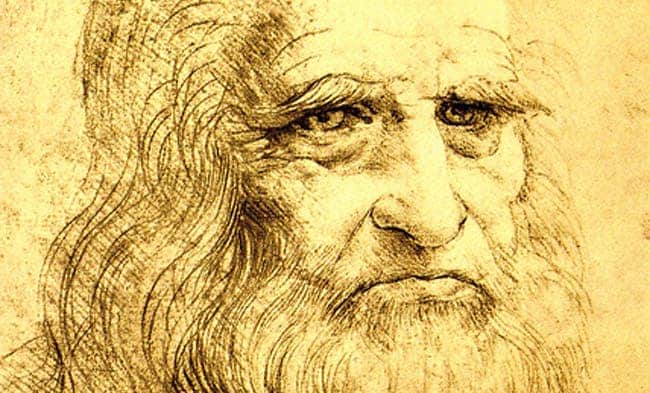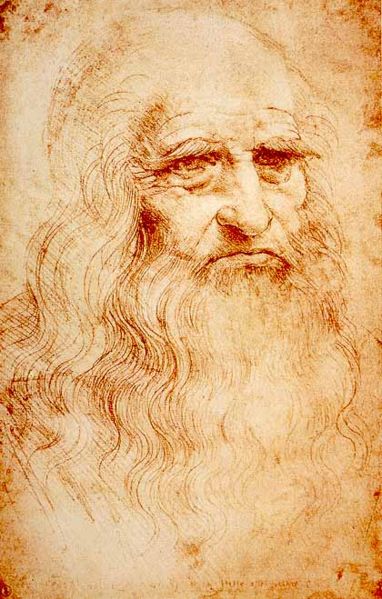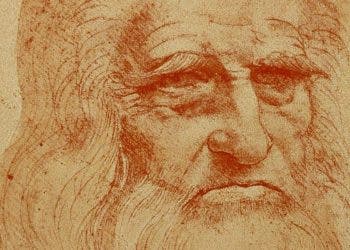
To-do lists are a great way to keep your life organized and track goals. For instance, my to-do list for today is ‘call my accountant; buy milk; wait home for the courier to drop off shopping at 1PM; finish a book review;’ and that’s basically it. I felt pretty good about what I would accomplish — until I learned how Leonardo da Vinci went about his ‘mundane’ tasks.
Leonardo, one of the most brilliant men to have ever lived, diligently documented his inventions, experiments, and interests which included painting, sculpting, architecture, science, music, mathematics, engineering, literature, anatomy, geology, astronomy, botany, writing, history, and cartography — to name only a few. Buried in one of his many notebooks dated from the 1490s is a to-do list, which NPR had translated. “It is useful,” Leonardo wrote, to “constantly observe, note, and consider.”
[Calculate] the measurement of Milan and Suburbs
[Find] a book that treats of Milan and its churches, which is to be had at the stationer’s on the way to Cordusio
[Discover] the measurement of Corte Vecchio (the courtyard in the duke’s palace).
[Discover] the measurement of the castello (the duke’s palace itself)
Get the master of arithmetic to show you how to square a triangle.
Get Messer Fazio (a professor of medicine and law in Pavia) to show you about proportion.
Get the Brera Friar (at the Benedictine Monastery to Milan) to show you De Ponderibus (a medieval text on mechanics)
[Talk to] Giannino, the Bombardier, re. the means by which the tower of Ferrara is walled without loopholes (no one really knows what Da Vinci meant by this)
Ask Benedetto Potinari (A Florentine Merchant) by what means they go on ice in Flanders
Draw Milan
Ask Maestro Antonio how mortars are positioned on bastions by day or night.
[Examine] the Crossbow of Mastro Giannetto
Find a master of hydraulics and get him to tell you how to repair a lock, canal and mill in the Lombard manner
[Ask about] the measurement of the sun promised me by Maestro Giovanni Francese
Try to get Vitolone (the medieval author of a text on optics), which is in the Library at Pavia, which deals with the mathematic.
Another da Vinci to-do list dated 1508-10 and now in the possession of the Royal Collection in the UK worked as a reminder to obtain a skull, to get his books on anatomy bound, to observe the holes in the substance of the brain, to describe the tongue of the woodpecker and the jaw of a crocodile, and to give the measurement of a dead man using his finger as a unit. On the same page with the list, da Vinci also scribbled some thoughts which dissected what are the essential qualities of a successful anatomical draughtsman. He highlights not only skill in drawing, but also knowledge of perspective, an understanding of the forces and strengths of the muscles, and patience. He also writes to himself that an anatomist might be ‘be impeded by your stomach’ or ‘by the fear of living through the night in the company of quartered and flayed corpses, fearful to behold’.
One can imagine da Vinci strolling through the streets of Milan and writing notes such as these whenever something caught his attention. A lot of things have been said and written about da Vinci’s work, but despite all his contributions we know little about how the man himself was like. Though da Vinci was a mysterious person who generally kept to himself, we can immediately notice two things from his to-do lists. Firstly, he had an insatiable curiosity and his mind would wander from one thing to the other. In the morning he might be studying arithmetic or anatomy and in the evening he would be casually drawing Milan. Secondly, da Vinci knew how to pick the brain of those who were more knowledgeable than him in certain fields of study. It’s no wonder that he eventually became a polymath.






